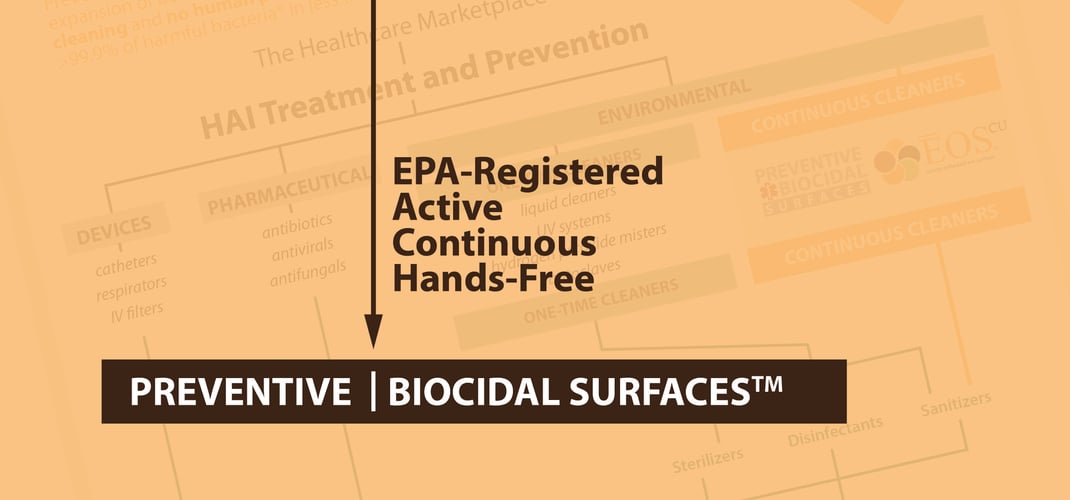The Meaning of Clean: Sanitizers, Disinfectants, and Sterilizers

While the general population may use terms like sterilizer, disinfectant and sanitizer interchangeably, they actually have very specific definitions according to the government agency that regulates them, the Environmental Protection Agency (EPA). These definitions include what percentage of pathogens must be killed, in what specific amount of time they must be killed, and what protocols must be tested to achieve registration. All of these parameters are defined by the EPA and are not chosen or designated by the manufacturer.
Before delving into these terms, there is one basic term that we have to explore: Clean. There is a formal definition of "clean" when it comes to regulation. Items must be cleaned before they are sanitized, disinfected, or sterilized. Cleaning involves removing surface debris and foreign material using water, detergent, or enzymatic products. This is a necessary step because the high-level disinfection and sterilization processes cannot work effectively when foreign material is present. In the EPA-required instructions for use, all of the following products carry disclaimers about first cleaning the item to be sanitized, disinfected, or sterilized.
Sanitizers
By the EPA's definition, sanitizers must kill 99.9% of bacteria within two hours of exposure. Up until recently, this category was made up of chemicals such as sprays, gels, and topical agents which had similar characteristics:
- Toxic chemicals not suitable for extended exposure
- Non-continuous kill (must be used regularly)
- Must be repeated after recontamination
Since 2012, however, sanitizers now include two hard surfaces: Copper alloys and copper oxide infused hard surfaces. These surfaces had to be categorized as sanitizers as they are the first of their kind - a surface that kills 99.9% of bacteria in under two hours. So even though they are characterized as sanitizers, they do not have the characteristics listed above. Instead, they are:
- Non-toxic, safe materials suitable for extended exposure
- Continuous kill surfaces (is not a process that has to be repeated)
- Effective even after recontamination
Disinfectants
To be categorized as a disinfectant, a product must kill 100% of bacteria, fungi, and viruses within 15 minutes of exposure. Because they are stronger than sanitizers, they are also more toxic and are therefore not approved for any exposure to human tissues. They are only to be used on hard, inanimate objects and are available both for general and medical use. Household disinfectants include bathroom cleaners, water purifiers, and pool chemicals. In medical facilities, disinfectants are used to clean equipment that does not come into contact with mucous membranes or cross the skin barrier such as floors, walls, linens, toilets, IV poles, and doorknobs. Like sanitizers, they do not kill continuously or after recontamination, so consistent reapplication is required. Unfortunately, some bacteria have developed resistance to certain disinfectants, so a combination of chemicals is required in healthcare settings.
Sterilizers
The most biocidal of the three categories, sterilizers must achieve the most stringent protocols. Sterilizers must kill 100% of all forms of microbial life within 2 minutes. This includes bacteria, fungi, viruses, and spores (the term sporicidal is often used to indicate that spores, the most difficult form to kill, are destroyed by a particular product). Sterilizers are used on instruments and materials that come into contact with mucous membranes and cross the skin barrier, including scalpels, IVs, needles, catheters, wound dressings, and any implantable device (such as a pacemaker). Sterilizers can be devices such as autoclaves, which use high-pressure steam, as well as liquid chemicals. Users must have specific training and certification to assure that the required degree of sterilization is achieved. As with most sanitizers and disinfectants, sterilization must be performed regularly and after any contamination as the product does not kill continuously.
We hope this brief description has aided in your understanding of the degrees of clean covered by the EPA's public health claims. Future posts will explore more detail about how hospitals categorize devices, housekeeping routines, and the meaning of "clean"!
Editor's Note: This post was originally published in February 2015 and has been updated for freshness, accuracy and comprehensiveness.
![EOScu Logo - Dark - Outlined [07182023]-01](https://blog.eoscu.com/hubfs/Eoscu_June2024/Images/EOScu%20Logo%20-%20Dark%20-%20Outlined%20%5B07182023%5D-01.svg)

![[infographic] Antimicrobial Market Segmentation Download and share!](https://no-cache.hubspot.com/cta/default/216314/interactive-178566399573.png)



